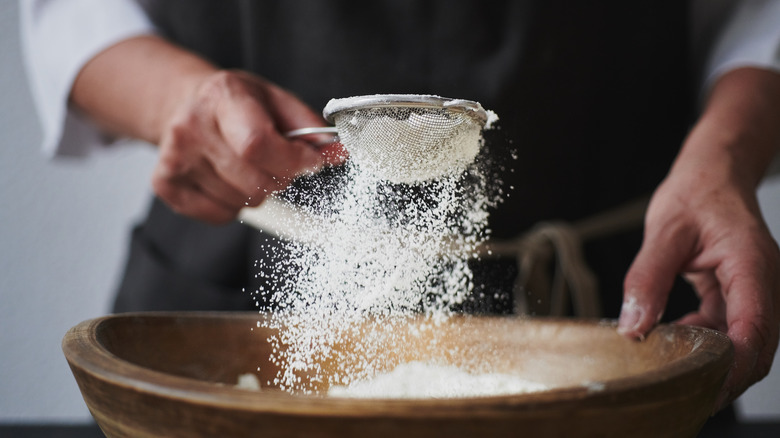Here's When Ina Garten Prefers To Sift Flour
Sifting flour is the process in which lumps are broken up and the flour is aerated, as Christine Gallary writes at TheKitchn. Using a sifter creates a flour that is lighter and easier to mix. The process also helps to blend together ingredients, especially when multiple dry ingredients are being used — think flour, cocoa powder, and baking powder all at once. Sifting can also come in handy when you're looking for a thin layer of flour to coat the surface of a workstation while you roll out dough for, say, a pie crust.
But is it really necessary to sift the flour while you're baking? And if it is, at which point in the process should you do so? Michelle Lopez, writing at Bon Appétit, says sifting is "often a waste of time." Sifting is an outdated process and can most often be skipped, as flour is milled more finely now than before, producing more consistent sizes. But, although the Barefoot Contessa sticks to sifting, she also offers up another solution.
What's Ina's advice?
"I actually sift the flour after measuring it to combine it with the other dry ingredients, but that's technically not necessary," writes Ina Garten on her website. She explains that while sifting is used to standardize the amount of flour in each cup, there is a better way to get there. Garten says that by using a spoon to lighten the flour before you measure it, you will also end up with a standardized amount of flour. (Yet another reason why she is a culinary gem.)
However, although Garten may have her own standard way to measure and sift her flour, TheKitchn says that there are certain recipes in which sifting should be used. These include delicate cakes, like sponge cake and angel food cake, that need that airy texture. Or, if your flour hasn't been used in awhile and has settled into a tightly-packed block, sifting will help get an accurate measurement as well as make your flour easier to use.

